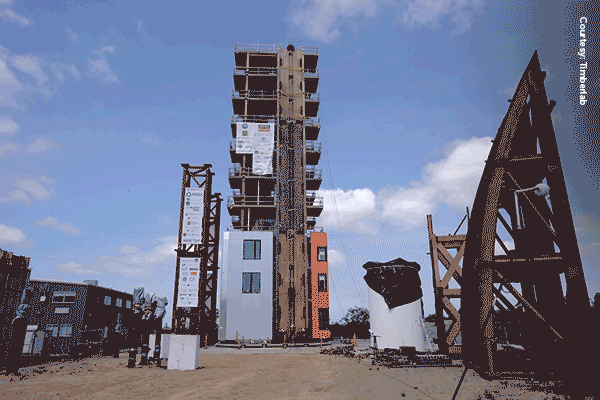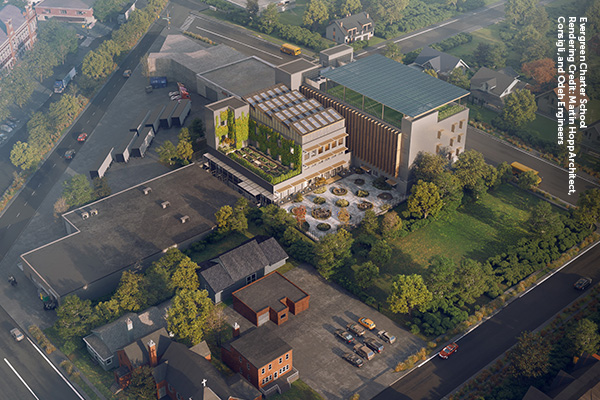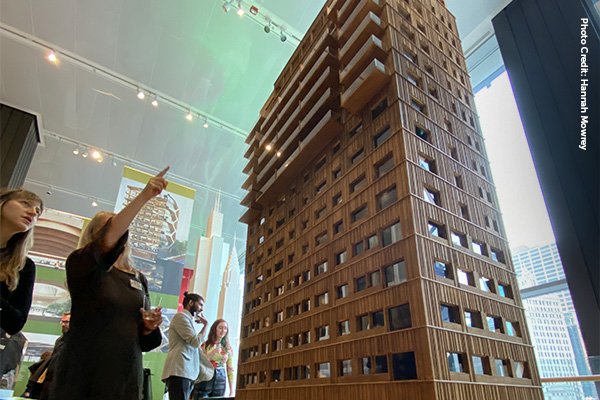HIGHLIGHTS
Program Updates
The AWC Launches Wood Sourcing Tool
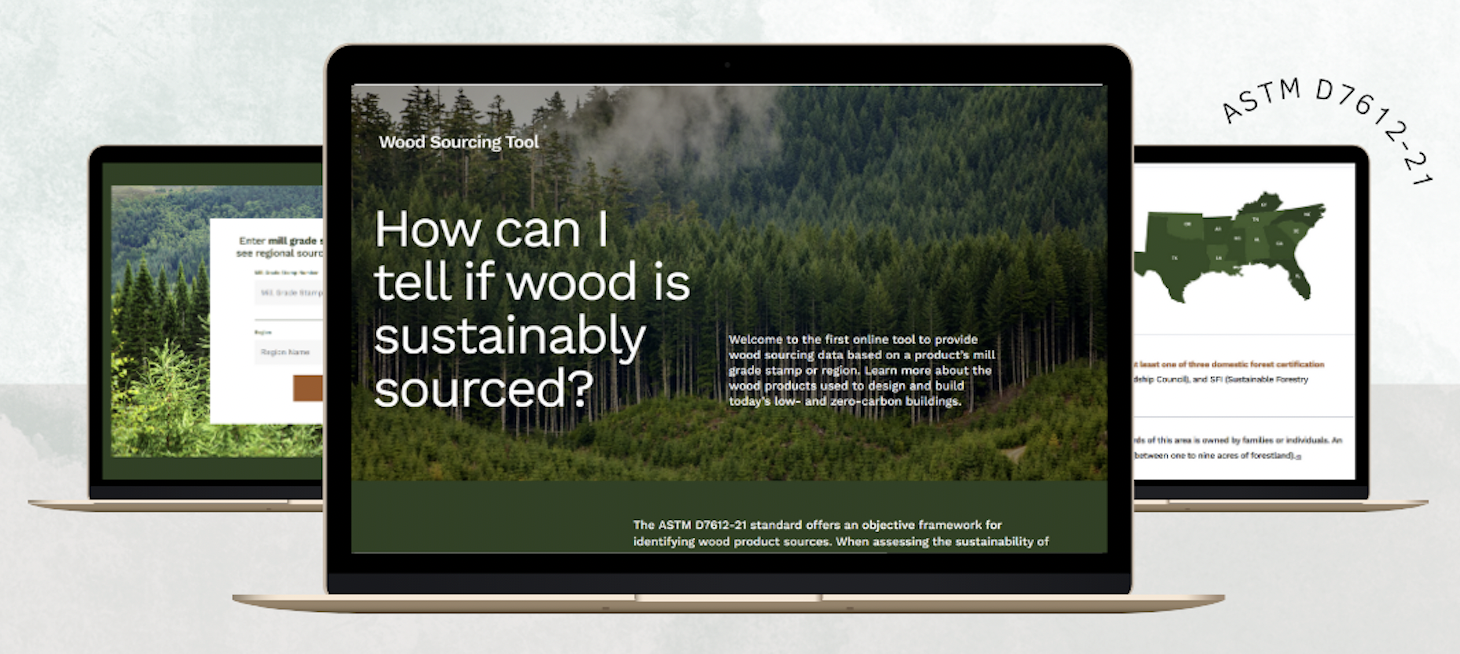
The American Wood Council has launched a new Wood Sourcing Tool to tell the sustainability story of lumber through data based on a wood product’s mill grade stamp or region. Funded by the SLB and the U.S. Endowment for Forestry and Communities, the first-of-its-kind online tool is designed to help users better understand where their wood products are coming from and the safeguards in place throughout the supply chain to ensure sustainable processes.
“As questions around the sustainability of fiber supply continue to grow alongside interest in mass timber in commercial construction, this online Wood Sourcing Tool promises to provide regional, robust data that will provide assurances being sought by the architect, engineering, and construction communities,” said Rachael Jamison, AWC Vice President of Markets & Sustainability.
With a great story to tell about the sustainability of timber throughout the product life cycle, resources such as the Wood Sourcing Tool help create the transparency needed to make softwood lumber products a viable choice for specifiers.
Think Wood Marks Outdoor Living Season With Dramatic Wood Porch Profile
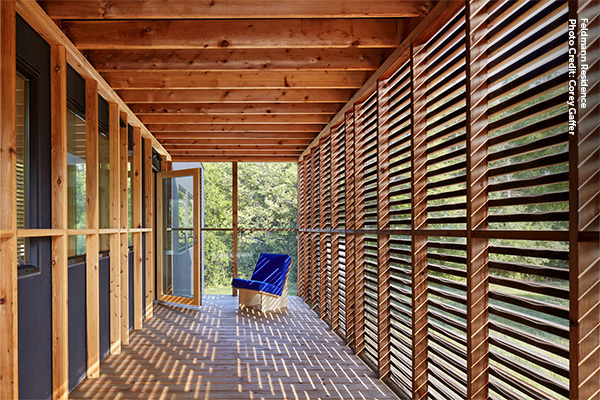
With outdoor living season and National Deck Safety Month underway, a recent Think Wood project profile highlighted architect David Salmela’s Feldmann Residence, which features an eye-catching second-story cedar porch overlooking Lake Minnetonka near Minneapolis.
The 235-square-foot deck is dramatically cantilevered from the second floor, supported by three Douglas fir glulam beams. Enclosing screens of cedar slats protect the space from the southern sun and provide a better protected, and more private, space. “It is an extremely dramatic place,” the architect says.
Defending timber’s single-family home market share with a focus on decking is a primary objective of the Think Wood campaign, and using design-centered stories like this regional modernist project helps keep wood top of mind for our architect and contractor audience.
WoodWorks Brings Carbon Expertise to AEC Industry Sustainability Programs

With growing expertise on carbon and whole-building life-cycle assessment (WBLCA), WoodWorks is working to influence tools and policies created for the AEC community and affect material decisions on projects. WoodWorks continues to meet with tool developers to resolve shortcomings that negatively affect softwood lumber products, collaborate on wood industry positions, and meet with groups such as SE 2050, AIA 2030, and the Carbon Leadership Forum. WoodWorks is also developing WBLCAs with numerous partners, including several winners of the Mass Timber Competition: Building to Net-Zero Carbon, and identifying teams with published LCAs to help them create more accurate studies.
The U.S. Green Building Council has opened the door to creating more opportunities for wood construction to earn points under the newest version of the LEED program being developed. With an increased focus on embodied carbon, LEED v5 has the potential to highlight the benefits of wood construction, and WoodWorks and the AWC are working with the USDA Forest Service to provide input on those point categories.
The AWC was asked to help draft a revised “Raw Material Procurement” standard for LEED, proposing language that strategically shifts from forest practices to verified/verifiable mill-level systems to ensure stringent controls on wood entering the supply chain. The AWC supports this move, as getting a handle on forest management from thousands of land managers is not possible and is often outside of manufacturers’ control. An initial draft of the standard is expected to be released in September for public comment.
These outreach efforts around carbon and sustainability are critical to ensuring that AEC professionals have the right tools and platforms through which to understand the benefits of wood construction and why softwood lumber products might be the best material for their next project.
International Student Design Competition Exposes U.S. Students to Diverse Perspectives and Talent
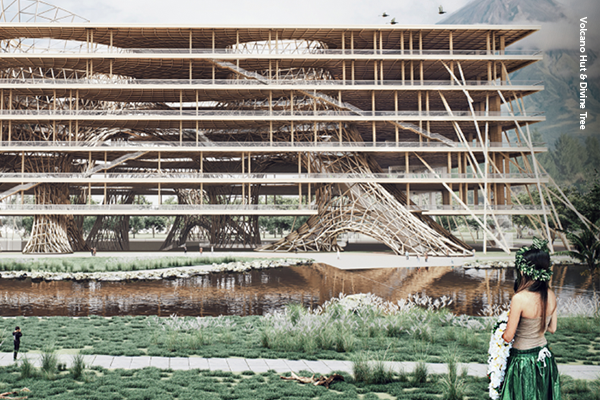
Five winners were recently selected in the 2022 Tall Building Design Competition sponsored by the SLB in collaboration with the Council on Tall Buildings and Urban Habitat (CTBUH). The international competition invites students to harness their enthusiasm for natural materials by submitting concepts for multistory buildings in the United States that maximize the use and expression of mass timber. The competition’s jurors were impressed by the caliber of the innovative designs and expressed enthusiasm that many of the international submissions would foment further interest and engagement with mass timber at U.S. architecture schools.
“The projects exemplify a diverse, thought-provoking range of timber applications in the built environment,” said Edward Becker, Associate Professor at the Virginia Tech School of Architecture and Design. “The participation of international students in the CTBUH competition is great to see. Per their respective backgrounds, international students bring diverse social, cultural, and technological approaches to the use of wood, thereby benefiting American students and elevating the overall quality of work produced for future competitions.”
Through academic competitions like this, the SLB helps to identify and prioritize future leaders who are serious about entering architecture practice, while reinforcing their awareness of the economic and environmental benefits of building with wood—so that when they enter the workforce, wood will be considered immediately in the design process.
Spotlight
$700M New York Climate Exchange Campus Design Features Mass Timber Construction
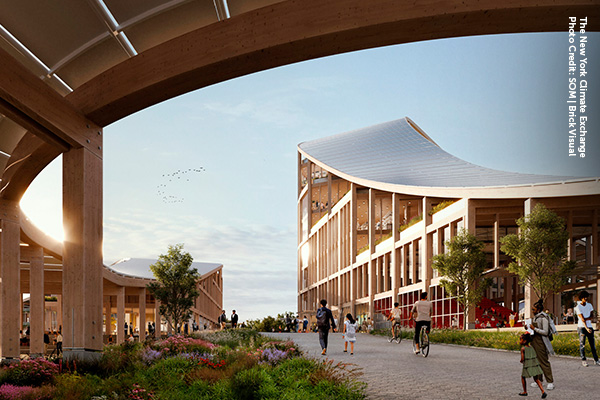
The New York Climate Exchange will give mass timber a starring role in a high-profile campus on Governors Island. New York City Mayor Eric Adams announced last month that a group led by Stony Brook University will build a $700 million campus dedicated to finding solutions for the climate crisis, the New York Times reported. Architecture firm Skidmore, Owings & Merrill revealed its design for the climate hub that positions it as a model for sustainability, with design strategies including mass timber construction, on-site photovoltaics, and the integration of existing buildings to achieve a net-zero-energy campus.
“Our design for this new campus embodies the stewardship necessary to solve the climate crisis by weaving sinuous mass timber pavilions through the rolling landscape of the park and reusing the historic building fabric of Governors Island,” said SOM Design Partner Colin Koop in the announcement. “Together, these spaces will cultivate advances in climate research and pilot new technologies that can be deployed across the city, and eventually the world.”
The architect’s choice of mass timber as the structural system for this sustainability showpiece underscores the standing that the lumber industry has achieved in the embodied carbon conversation. The SLB and its funded programs are working in concert and with a unified voice to educate policymakers and AEC practitioners about how softwood lumber products can be used to reduce the carbon footprint of our built environment, and this ambitious project represents a step forward in spreading that awareness more broadly around the globe.
Industry Resources
FEA’s Housing Dashboard
Virginia Tech's Monthly Housing Report
This monthly housing commentary report is a free service of Virginia Tech and is intended to help one gauge future business activity in the U.S. housing market.
March 2023 Reports (released in May 2023)
Part A: March Housing Commentary
Part B: March Economic Conditions


